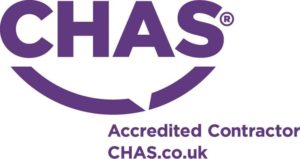Technology has always been a double-edged sword for the education sector. On the one hand, updating education technology is a blessing, making communication, learning, and engagement for students more exciting. But on the other hand, it can be extremely confusing, expensive and unreliable!
Having worked with the education sector for many years, we understand more than most the challenges faced by IT Managers, Network Managers and Business Managers when it comes to technology.
Once you start on the road to keeping your school, college or university up to date with the latest tech, it can be very hard to turn back. You don’t want to fall behind your counterparts and with children arguably being the ‘tech-generation’, there are very few schools remaining who don’t use any form of technology.
Children need stimulation and like it or not, technology is providing that in abundance. Schools either turn their back on it and lose the interest of their students or they jump on board with it and allow it to enhance their students’ learning and keep them engaged.
However, it’s no secret that technology can also be extremely frustrating. So we’ve compiled a short guide to give you the inside knowledge of the challenges we foresee for educators and how to overcome them.
Let’s get started.
Budget
Stretching the budget has always been a challenge for schools. We know that this is one of the most restrictive things holding schools back from investing in technology for their classrooms. Now, more than ever, headteachers across the country are experiencing sleepless nights over the availability of their budgets and how best to distribute them.
There are a few reasons for this;
1. COVID-19 has meant that their funds have been distributed to other areas such as PPE for staff and general safeguarding measures.
2. With COVID infections on the rise again; albeit a much milder variant, staffing levels have been severely impacted. With a much higher frequency of teacher absence, large proportions of school budgets are being spent on supply staff to keep the schools open. As reported by Tes Magazine, one school head says that his supply cover budget has risen by 400 per cent for the academic year with six members of staff off.
3. With the increased cost of living with the energy crisis beginning to take hold, school budgets are being impacted as much as the individual. This is also affecting catering costs, especially in schools with inhouse catering facilities where costs are seeing a rise of approx. 10 percent in the recent months.
4. Building and maintenance costs are also putting pressure on school budgets. This is a result of the global shortage of materials, resulting from the pandemic. This coupled with the demand for schools to have work done which had been put on hold over the lockdowns has further pushed the prices up.
5. Availability of funds varies significantly between schools. The allocation of money is decided based on the National Funding Formula and depends on the number of children at the school and various other factors. This combined with the formulae of the local authority determines the final amount the school receives with some schools receiving significantly more than others.
How headteachers choose to spend their budgets is very much a plate spinning game. Prioritising staffing and energy spend are quite rightly at the top of the list.
So how can we help?
Well, we can help in many ways to reduce this headache for our customers.
1. Firstly, we can spread the cost of the spend on technology throughout the year with a leasing option. So rather than owning the equipment, the end-user would lease it with various options to renew or purchase at the end of the lease term. Therefore, accessing a specific upfront lot of money is unnecessary.
2. We can arrange for payments to be deferred. So, if you need the equipment next week but you would like to start the lease in 10 months’ time, this is a definite option.
3. We have access to extremely competitive pricing with distribution through our accreditation with manufacturers such as BenQ, SMART, Hikvision, Hitachi, Dell etc. We always pass any discounts we receive onto our customers as we understand the pressures they are experiencing of financing their schools.
Procurement
Obviously, the pandemic has had a huge impact on a range of things, not least of which the availability of equipment. The pandemic triggered the global chipset shortage which is ongoing due to lack of labour in producing them.
Of course, chipsets are vital to every piece of hardware, from fridges and TVs to laptops and handsets. The lead time has been further impacted by Brexit, the recent Ukraine Crisis as well as the delay in the Suez Canal last year. What would have been available on a one-day lead time a couple of years ago, is now taking two to four weeks to arrive.
Moreover, there are considerable backlogs at UK ports and around the world. The good news is that it is improving: albeit extremely slowly.
To ensure that you are not waiting too long for your deliveries, the obvious answer is to put your order in sooner rather than later and certainly don’t wait until the last minute. Our recommendation would be to order 4 weeks in advance, if possible, especially if you require an installation.
In addition, once in the hands of the couriers, they are not always able to deliver kit to site on time for various reasons, which is further impacting on a timely installation.
So if you have any planned requirements for the summer holiday period, we would certainly recommend a faster decision-making process.
However, if the kit you would prefer is not available, don’t worry! Our expertise and knowledge of the market means that we can recommend alternative solutions which will meet your objectives just as well. This is where we can help you avoid the frustration of your works potentially not being completed on time.
Network Infrastructure
A great deal of school’s infrastructure is not fit to cope with the ongoing emphasis on device-driven and online learning. Schools are often running outdated fibre backbone and switch infrastructure.
They simply won’t have capacity to support ‘bring your own device’ (BYOD). In addition, services that were once analogue and are now digital (IP) such as CCTV and access control will also struggle on an outdated network infrastructure.
To overcome these challenges, more and more schools are upgrading their fibre optic backbone and switch gear from 1 gig to 10gig in order to support the growing demand. Speed and functionality will improve significantly.
Summary
To conclude, whilst the challenges faced by many education settings are vast, when it comes to managing technology advancements, there are several workable solutions which will alleviate the pressure felt by many.
With a progressive approach and an open-minded expectation of what is possible, there is no reason why any school, college or university setting should be left behind in this exciting era of technology advancement.
Next steps
If you are looking for help with your next project or would like any help or advice on any of the points highlighted in this article, please do feel free to contact one of our expert team as follows;
Tel: 01923 235 377
email: [email protected]










